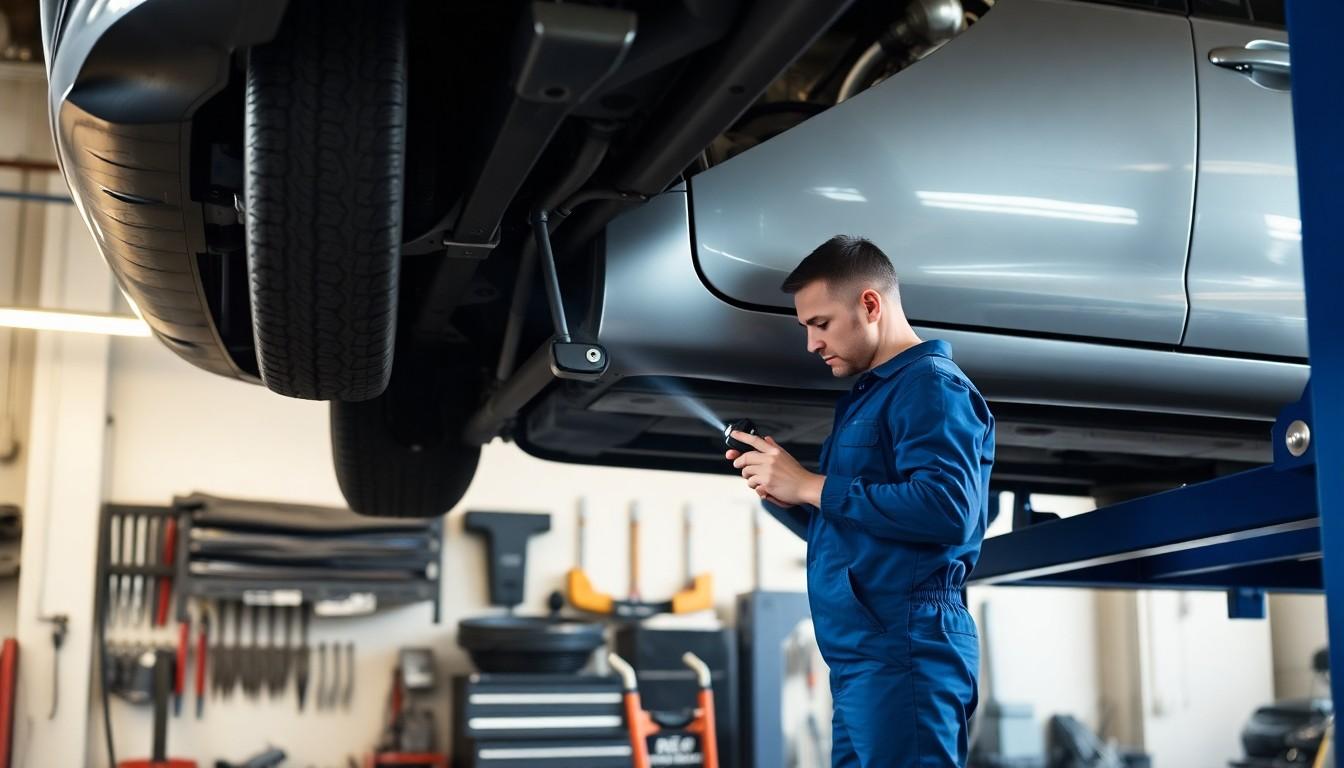When shopping for a used car or dealing with post-accident repairs, understanding frame damage is crucial. We’ve seen countless buyers overlook this critical issue, only to face thousands in repair costs down the road. Frame damage isn’t just a minor inconvenience—it’s a serious structural problem that affects your vehicle’s safety and value.
But what exactly qualifies as frame damage? Many car owners are confused about the difference between cosmetic damage and true structural problems. We’ll clear up this confusion by explaining the types of frame damage, how to identify them, and why they matter to your vehicle’s integrity. Whether you’re evaluating a potential purchase or assessing repair options after an accident, this knowledge will protect your investment and safety.
Understanding Car Frame Damage: The Basics
Car frame damage refers to any structural compromise that affects the vehicle’s unibody or body-on-frame construction. Modern vehicles typically use unibody construction, where the frame and body form a single integrated structure, while older trucks and SUVs often employ a body-on-frame design with a separate chassis supporting the vehicle components.
Frame damage occurs when an impact or collision is severe enough to bend, crack, or warp the structural components of a vehicle. Unlike cosmetic damage that affects only the vehicle’s appearance, frame damage compromises the car’s structural integrity, potentially affecting safety systems and crash performance.
Several key indicators suggest frame damage in a vehicle:
- Uneven tire wear or alignment issues that persist after adjustments
- Doors that no longer close properly or show uneven gaps
- Strange noises while driving, especially over bumps
- Visual bending or warping in structural components
- Crumple zones that have been compressed from impact
Insurance companies classify frame damage based on severity levels ranging from minor to severe. Minor frame damage might involve slight bends that can be repaired, while severe damage often results in the vehicle being declared a total loss due to compromised safety and prohibitive repair costs.
The critical distinction between body damage and frame damage lies in their impact on vehicle functionality and safety. Body damage typically affects external panels that can be replaced without compromising structural integrity, while frame damage affects the core structure supporting all vehicle systems and protecting occupants during collisions.
Types of Frame Damage in Vehicles
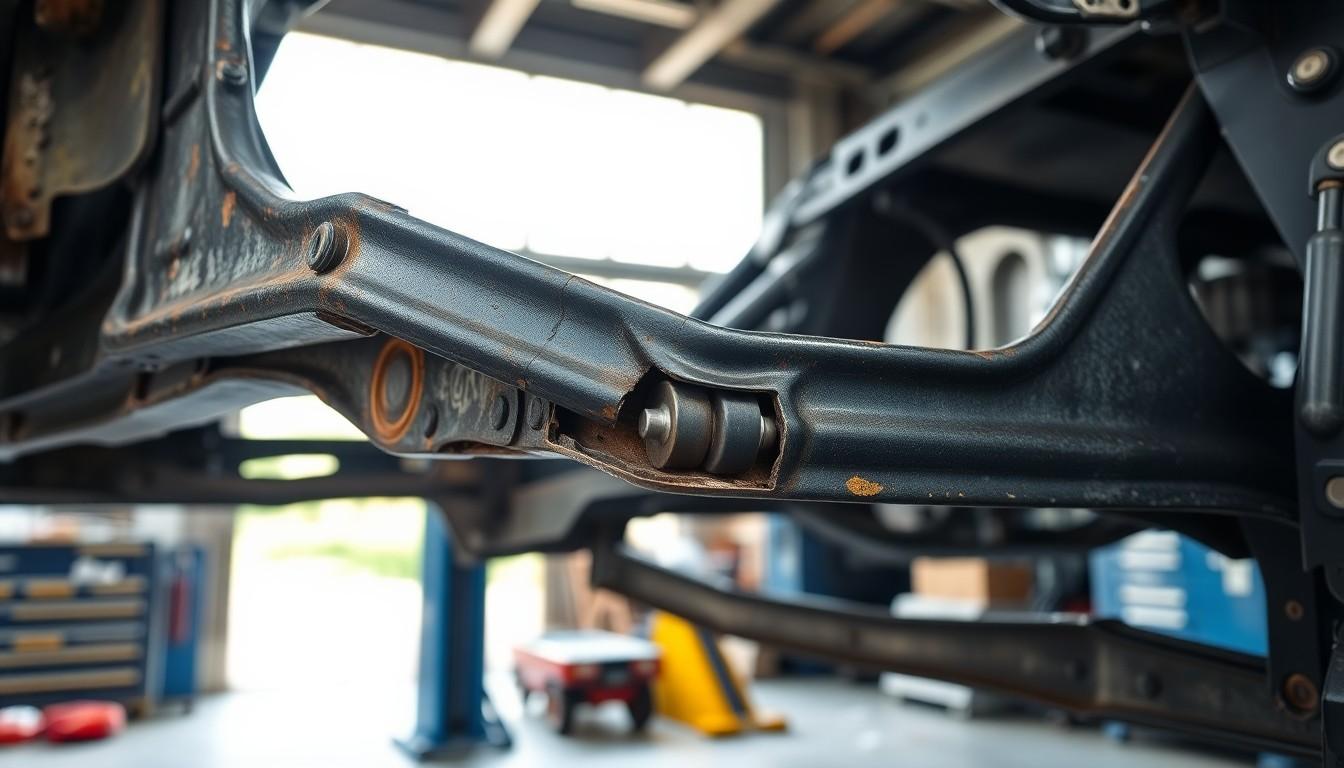
Frame damage comes in several forms, each affecting your vehicle’s structural integrity and safety in different ways. Understanding these variations helps you identify potential issues before they compromise your driving experience or become costly repair nightmares.
Bent Frames
Bent frames represent one of the most common types of structural damage in vehicles. This condition occurs when the frame becomes misaligned or deformed due to important impact forces. Signs of a bent frame include uneven tire wear, difficulty driving in a straight line, and noticeable gaps between body panels. Vehicles with bent frames often pull to one side during braking or acceleration, creating potentially hazardous driving conditions. Side impacts frequently cause this type of damage, resulting in the frame bending laterally and compromising the vehicle’s overall stability.
Cracked or Broken Frames
Cracked or broken frames constitute severe structural damage that significantly compromises vehicle safety. These critical failures typically result from high-impact collisions or prolonged stress on weakened frame sections. Symptoms include unusual vibrations, metal fatigue marks visible on frame components, and strange noises when driving over bumps or making turns. Frame cracks can spread over time, turning a repairable situation into a total loss. This damage category represents the most serious frame issues, often requiring extensive repairs or complete frame replacement to restore safety standards.
Sagging Frames
Sagging frames develop when the vehicle’s structural support weakens and begins to droop, particularly in the middle sections. This type of damage manifests through visual indicators such as the vehicle sitting lower than normal, uneven door gaps, and difficulty opening or closing doors properly. Sagging frequently occurs due to age-related deterioration, repeated stress from overloading, or previous accident damage that wasn’t properly repaired. Vehicles with sagging frames typically display unusual body lean during cornering and may experience premature suspension component failures due to abnormal weight distribution and stress points.
Mashed Frames
Mashed frame damage results from compression forces—usually from front or rear collisions—that crumple and shorten the frame. This damage type appears as wrinkles or distortions on the hood, fenders, frame horns, and rails. The vehicle’s overall length becomes shorter than manufacturer specifications, affecting crucial crumple zones designed to absorb impact energy. Mashed frames often create alignment issues, drivetrain problems, and compromised crash protection. Front-end mash damage particularly affects the engine compartment’s structural integrity, while rear-end mash damage can compromise trunk space and rear collision protection systems.
How to Identify Frame Damage
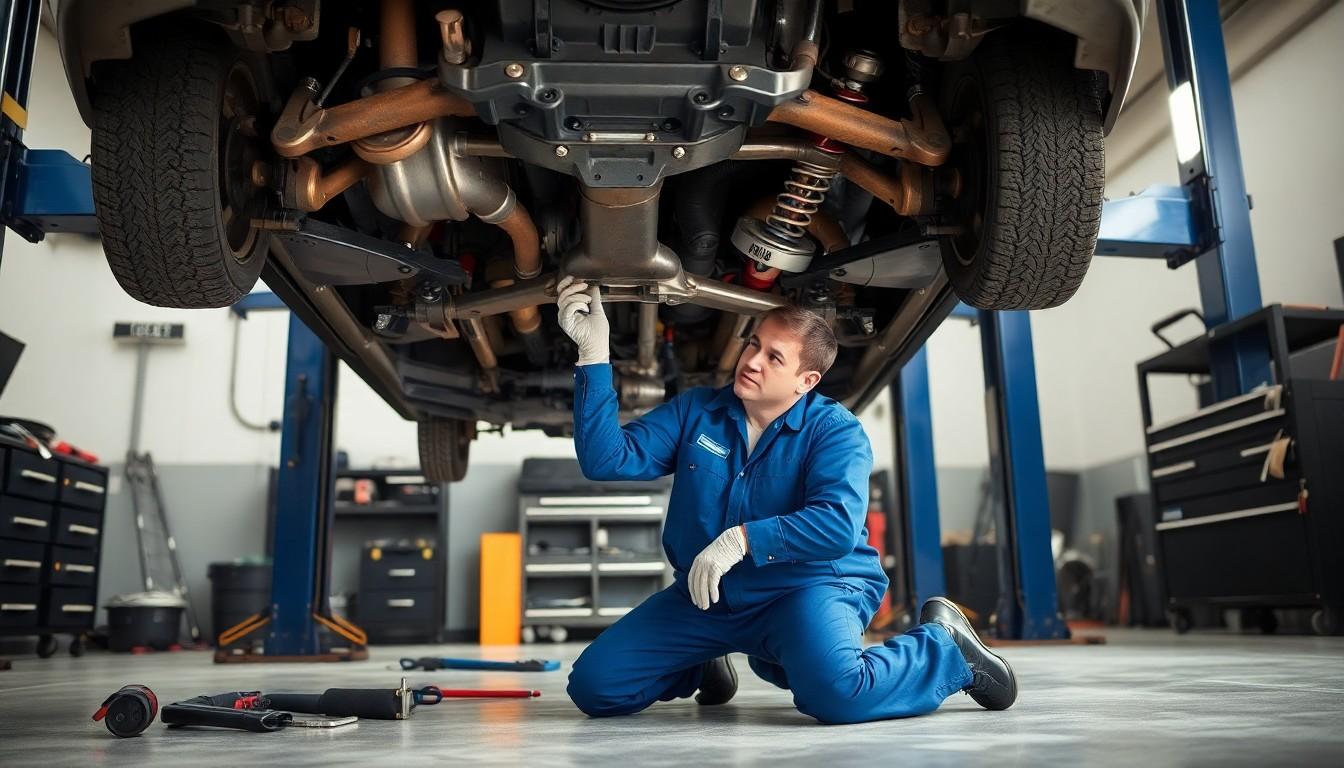
Identifying frame damage requires examining both visual cues and driving behavior. Frame damage often reveals itself through exact indicators that car owners can check without specialized equipment.
Visual Inspection Signs
A thorough visual inspection can uncover telltale signs of frame damage. Start by examining the entire vehicle frame, paying special attention to areas with visible exterior damage—sliding underneath the car provides the best vantage point for spotting bends, cracks, or stress points. Poorly fitting body panels often indicate underlying structural issues, so check if doors, trunk, and hood create consistent seams around their openings. Uneven gaps between body panels serve as another reliable indicator of frame damage, as these components no longer align properly due to structural deformation.
Driving Performance Indicators
Frame damage frequently manifests in how a vehicle handles on the road. Unusual or uneven tire wear patterns suggest the car’s alignment has been compromised by frame damage, causing tires to contact the road at incorrect angles. Crab walking—where the rear wheels don’t track directly behind the front wheels when driving straight—indicates a bent frame forcing the vehicle to travel diagonally. Steering that persistently pulls to one side even though proper alignment adjustments often points to structural issues affecting wheel geometry. New rattles and squeaks that weren’t present before an accident can signal loose or damaged frame components, especially when accompanied by other symptoms. An uneven suspension system, where the vehicle sits noticeably lower on one side, commonly results from frame damage that’s altered the mounting points for suspension components.
Common Causes of Frame Damage
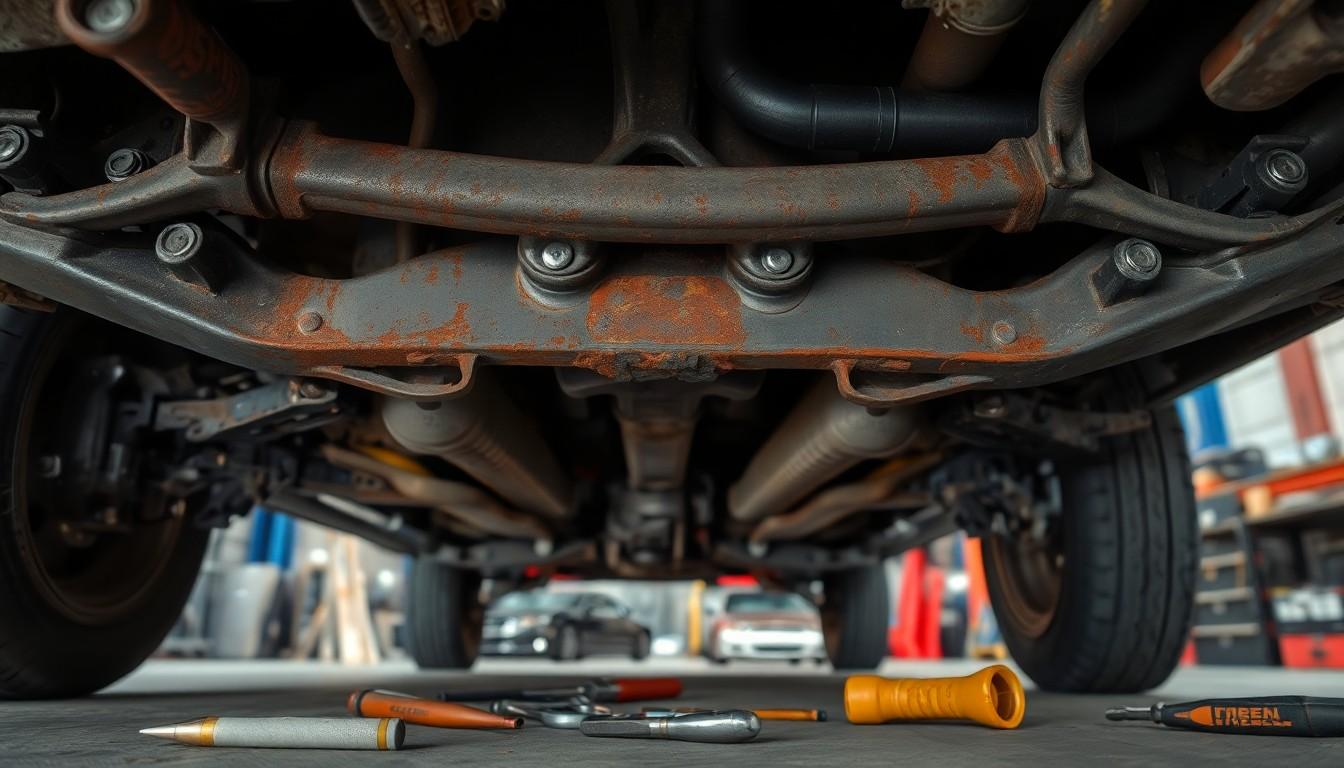
Frame damage occurs when a vehicle’s structural integrity is compromised, affecting both safety and performance. Understanding what leads to this serious issue helps car owners take preventative measures and recognize potential problems early.
Severe Accidents
Collisions represent the most common cause of frame damage, with high-speed impacts creating enough force to bend, buckle, or crack essential structural components. Multi-vehicle accidents typically generate tremendous pressure on the vehicle’s frame, potentially compromising its fundamental support system. The resulting structural damage often affects the vehicle’s safety systems, making it dangerous to drive without proper repairs. Even moderate collisions can lead to frame misalignment, which might not be immediately visible but creates long-term mechanical issues and safety concerns.
Environmental Factors
Rust stands as a important environmental contributor to frame damage, gradually weakening metal components through prolonged exposure to moisture, road salt, and corrosive substances. Weather conditions, particularly in areas with harsh winters where road salt is common, accelerate corrosion processes that deteriorate the frame over time. Regular undercarriage washing helps prevent this type of damage, especially after driving on salted roads. Extreme temperature fluctuations can also stress metal components, leading to potential weakness in the frame structure after years of expansion and contraction.
Other common causes include hitting deep potholes at high speeds, which can bend lower frame components, and improper repairs that compromise structural integrity rather than restore it. Inadequate maintenance practices that allow small problems to worsen can eventually lead to important frame issues. Even natural wear and tear affects vehicle frames over extended periods, particularly in vehicles regularly driven on rough terrain or unpaved roads.
Impact of Frame Damage on Car Value
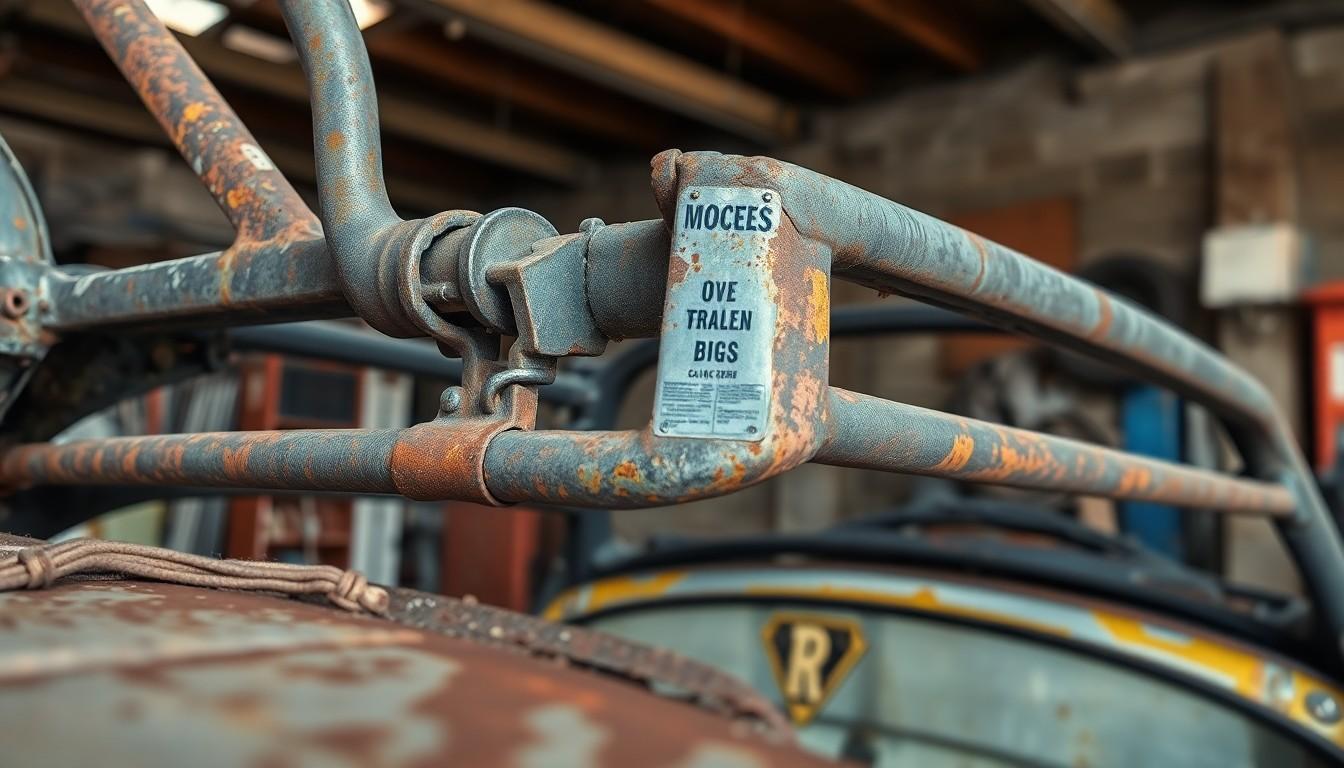
Frame damage significantly reduces a vehicle’s resale value, regardless of whether the damage is minor or major. Even repaired frame damage leaves a permanent mark on the car’s history, making it less desirable to potential buyers. Insurance companies and dealerships typically offer 30% less for vehicles with documented frame damage compared to similar undamaged models.
Safety concerns represent the primary reason for this substantial devaluation. A compromised chassis affects the vehicle’s structural integrity, particularly in unibody construction vehicles where all components are interconnected. Stress from a bent frame can transfer to other parts of the vehicle, creating unexpected failure points during subsequent collisions.
Financial implications extend beyond the initial devaluation. Unaddressed frame damage leads to many secondary issues that grow more expensive over time. These problems include:
- Accelerated tire wear from misaligned wheels and axles
- Visible body panel gaps that worsen with continued driving
- Uneven suspension performance causing handling instability
- Drivetrain component failures due to misaligned mounting points
- Water leaks through compromised seals around doors and windows
Many buyers specifically look for “clean title, no frame damage” in listings, indicating how significantly this factor affects marketability. Even professional repairs can’t fully restore a vehicle’s value once frame damage appears in its history report.
Insurance considerations add another layer of complexity. Some insurers refuse coverage for vehicles with previous frame damage or charge substantially higher premiums. This ongoing cost further diminishes the vehicle’s overall value proposition and makes ownership more expensive throughout its lifespan.
Can Frame Damage Be Repaired?
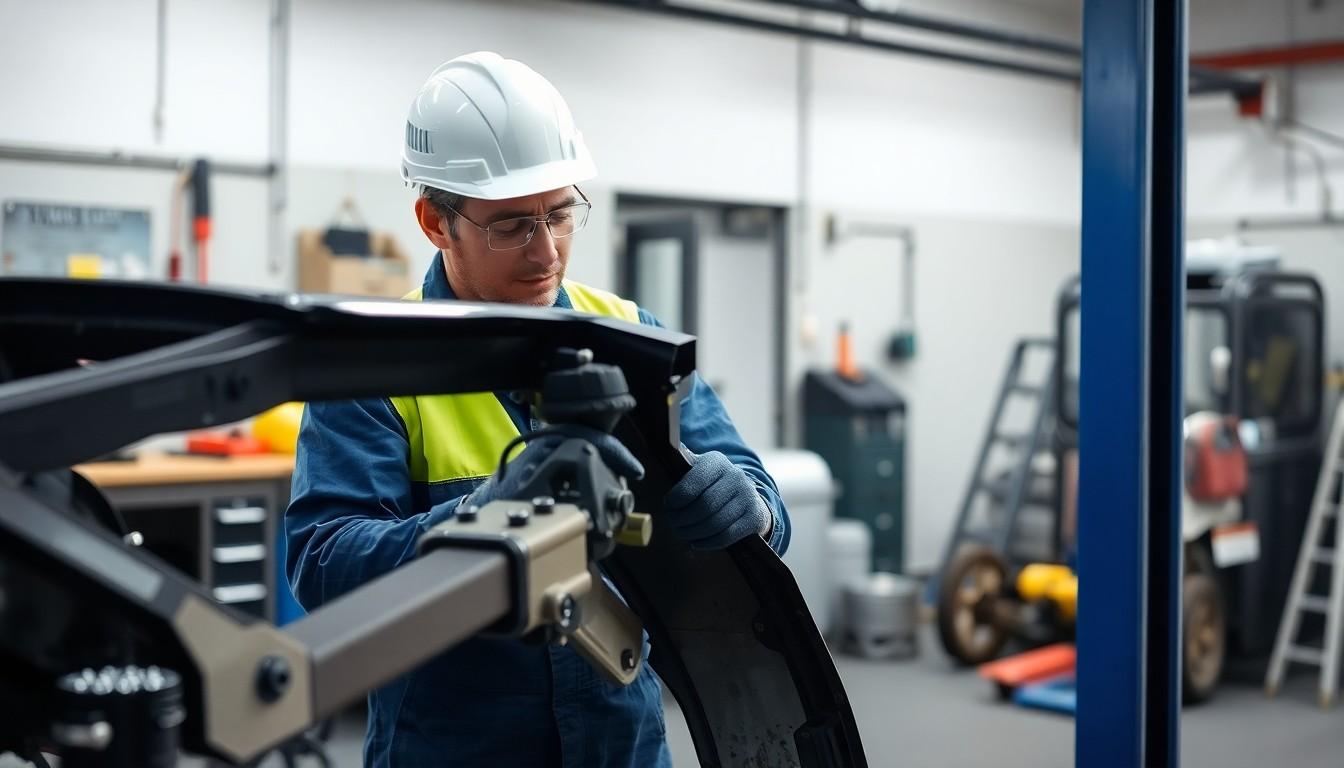
Yes, car frame damage can typically be repaired, depending on the severity and nature of the structural compromise. Professional auto body shops use specialized equipment and techniques to restore a vehicle’s frame to its original specifications, ensuring both safety and performance.
Repair Methods and Techniques
Frame repair professionals employ several effective methods to address structural damage. Realignment and frame straightening techniques serve as primary approaches for moderate damage, using hydraulic machines to pull the frame back into its proper position. Specialized tools apply calculated pressure to bent areas, gradually restoring the vehicle to its pre-collision state without compromising structural integrity.
Replacement parts offer another viable solution for localized damage, particularly for components like damaged pillars, rails, or structural panels. Auto body technicians might replace individual frame sections rather than attempting to repair severely compromised pieces, ensuring optimal structural integrity. This approach works particularly well for dented doors or damaged unirails where straightening might not be sufficient.
The dismantling and rebuilding process involves removing body panels, interior components, and sometimes even the engine to gain complete access to the damaged frame areas. Technicians use frame straighteners, welding equipment, and measuring systems to verify that repairs meet manufacturer specifications. Every connection point, weld, and structural component must be properly restored to maintain the vehicle’s original safety design.
When Frame Damage Is Beyond Repair
Severe damage often renders a vehicle structurally compromised beyond salvation. When the frame has experienced catastrophic deformation, multiple stress fractures, or important crumpling, repairs cannot restore the original structural integrity. Insurance companies typically declare these vehicles a “total structural loss” because they can never safely perform as originally designed.
Cost considerations play a crucial role in repair decisions. When repair expenses exceed 70-80% of the vehicle’s market value, insurance providers typically declare the car “totaled” rather than funding extensive frame repairs. This economic threshold varies by insurer and state regulations but serves as a practical limit for frame repair viability.
Safety risks represent the most important factor in determining if frame damage is repairable. Compromised crumple zones, weakened structural points, and altered crash management systems create dangerous conditions that repairs might not fully address. A vehicle with critical safety systems affected by frame damage poses unacceptable risks to occupants, even when cosmetic repairs make it appear sound.
Should You Buy a Car With Frame Damage?

Purchasing a car with frame damage presents important risks that typically outweigh any potential savings. Safety concerns stand as the primary reason to avoid these vehicles, as frame damage compromises the structural integrity that protects passengers during accidents. The compromised structure fails to perform as designed in subsequent collisions, potentially leading to catastrophic consequences.
Financial implications extend far beyond the initial purchase price. Cars with frame damage suffer an immediate 30% reduction in market value compared to similar undamaged vehicles. This depreciation persists regardless of repair quality, making resale difficult and financially disadvantageous.
Mechanical problems often cascade from frame damage. Misalignment stresses components like suspension, steering, and drivetrain systems, leading to premature wear and unexpected failures. These secondary issues gradually emerge over time, transforming an initially affordable purchase into a money pit of continuous repairs.
Insurance complications further complicate ownership of frame-damaged vehicles. Many insurers charge higher premiums or may refuse coverage altogether for cars with documented structural damage, adding ongoing costs to ownership.
Repair limitations exist even with professional intervention. While some frame damage can be corrected, complete restoration to original factory specifications remains extremely difficult. Specialized frame straightening equipment helps address certain issues, but the vehicle rarely returns to its pre-damage condition even though substantial repair investments.
Getting a professional inspection from an independent mechanic becomes essential if you’re still considering a frame-damaged vehicle. Their expertise can accurately assess the extent of damage and potential long-term implications before making such a consequential purchase decision.
Conclusion
Frame damage represents one of the most serious issues a vehicle can face affecting both safety and value. We’ve seen how it differs from cosmetic damage by compromising the car’s structural integrity and safety systems.
Understanding the types of frame damage and recognizing the warning signs can save you from costly repairs and dangerous driving conditions. Remember that even professionally repaired frames typically lose 30% of their market value.
When shopping for a used car always insist on a thorough inspection by a qualified mechanic. The few dollars spent on inspection can prevent thousands in future repairs and protect you from safety risks.
Frame damage isn’t just about dents and dings – it’s about the foundational integrity of your vehicle and eventually your safety on the road.
Frequently Asked Questions
What exactly is frame damage in a vehicle?
Frame damage refers to structural compromise affecting a vehicle’s unibody or body-on-frame construction. Unlike cosmetic damage, frame damage impacts the core structure that maintains vehicle integrity and safety. It occurs when impact forces are severe enough to bend, crack, or warp structural components. Modern vehicles typically use unibody designs where the frame and body are integrated as a single unit.
How can I identify if a car has frame damage?
Look for uneven tire wear, misaligned doors or body panels, and unusual gaps between panels. While driving, notice if the vehicle pulls to one side, makes unusual noises, or feels unstable. Visual inspection might reveal visible warping, bent metal, or fresh paint covering repairs. For used cars, request a vehicle history report and consider having a professional inspection with frame measuring equipment.
What are the different types of frame damage?
The main types include bent frames (misalignment from impacts causing uneven tire wear), cracked/broken frames (severe structural damage requiring extensive repairs), sagging frames (weakened structural support leading to uneven door gaps), and mashed frames (compression from collisions affecting vehicle length and crumple zones). Each type presents unique symptoms and repair challenges.
Can a car with frame damage be safely repaired?
Many frame damage cases can be repaired, but safety depends on the damage severity. Professional auto body shops use specialized equipment to restore frames to original specifications through realignment, straightening, or component replacement. However, catastrophic damage may render a vehicle irreparable from a safety standpoint. Even after repairs, some structural compromises may remain that affect performance in future accidents.
How does frame damage affect a vehicle’s resale value?
Frame damage significantly reduces resale value—typically by about 30% compared to similar undamaged vehicles. This devaluation persists even after professional repairs because of safety concerns and potential for secondary issues. Many buyers specifically avoid vehicles with documented frame damage, and some insurance companies charge higher premiums or refuse coverage entirely, further diminishing the vehicle’s market appeal.
What causes frame damage besides accidents?
While severe accidents are the primary cause, frame damage can also result from environmental factors like rust and corrosion, especially in regions using road salt. Hitting deep potholes at high speeds, driving frequently on rough terrain, improper repairs, and inadequate maintenance can contribute to frame deterioration over time. Even minor incidents can cause cumulative structural weakening.
Should I buy a car with previous frame damage?
Generally, it’s not recommended. The risks typically outweigh any potential price savings. Safety concerns are paramount as compromised structural integrity may not provide adequate protection in accidents. Additionally, you’ll face reduced resale value, potential mechanical problems from misalignment, possible insurance complications, and the reality that even professional repairs rarely restore 100% of original structural integrity.
How do insurance companies handle frame damage?
Insurance companies classify frame damage by severity, from minor damage requiring simple repairs to severe cases warranting a total loss declaration. When repair costs exceed a certain percentage of the vehicle’s market value (typically 70-80%), insurers may declare it a “total structural loss.” Additionally, vehicles with previous frame damage may face higher premiums or coverage limitations, as insurers consider them higher risk.

